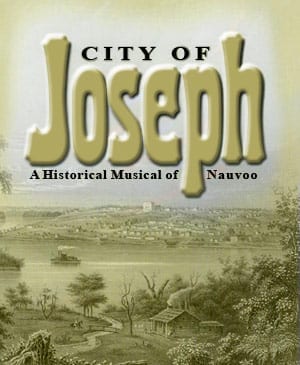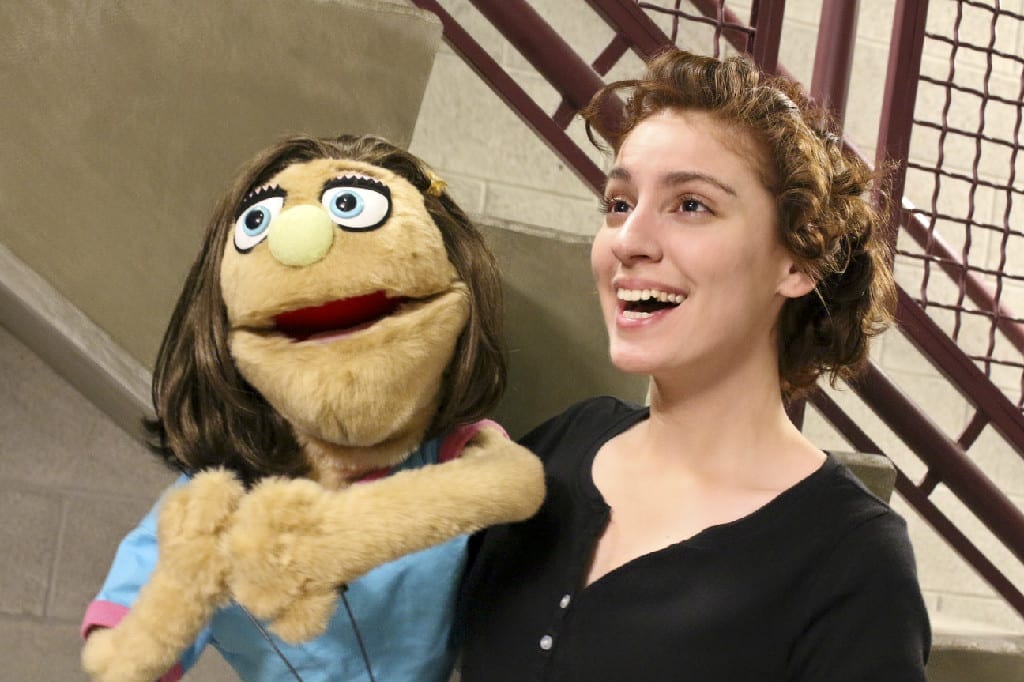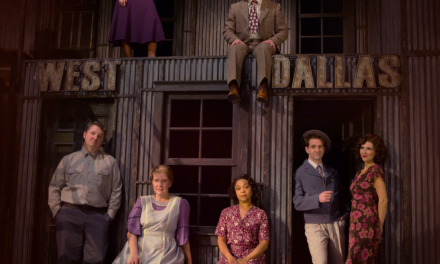PROVO — City of Joseph: A Historical Musical of Nauvoo is now playing at Brigham Young University as part of Campus Education Week festivities. Directed by Scott Eckern, the musical is a scaled-down version of the City of Joseph pageant that played at Nauvoo, Illinois, from 1976 to 2004. With a relatively small cast, the musical is missing the grandeur of spectacle but retains its spirit of devotion to the Church of Jesus Christ of Latter Day Saints (LDS Church, also known informally as the Mormon Church) and its founder Joseph Smith. The LDS Church has a long history of theatrical involvement by its members (a history, in fact, that stretches back to the 1840’s). This pageant, like many of the other well-known Church pageants such as the pageant at Hill Cumorah in Palmyra, New York, and the Mormon Miracle Pageant in Manti, Utah, was initially conceived and produced by Church members for a local audience and soon grew to be a major event attended by thousands every year. This prompted the involvement of the LDS Church who saw in the production an opportunity to reach non-members to teach them about the faith and to build the testimony of those participating. For those interested in how the LDS Church presents itself theatrically (in contrast to how others present it theatrically— ahem, The Book of Mormon) City of Joseph is worth attending. This is not to say that the pageant is representative of all so-called “Mormon theatre,” but, rather, that it captures the desire of the Church to promote its mission through the use of emotionally powerful history and song.

Show closes August 17, 2012.
With book and lyrics by R. Don Oscarson and music by Maughan W. McMurdie, the play should not be considered a traditional American musical. There is no narrative arc to the story, no conflict of opposing forces. Rather, the history of the founding of Nauvoo is recounted, as is the beginning of the LDS Church in Palmyra, New York. This history is interspersed with thematically appropriate songs that do more to illustrate the feelings of the early Church members than to progress the play. Instead, a narrator of sorts, played in this production by Marvin Payne, guides the pageant through history, utilizing journals and stories from those who lived in Nauvoo from 1839-1846. The narrator recounts not only the dates and details, but also such moments as the creation of the LDS Church’s Relief Society and the growth of the missionary effort. Interestingly, however, there are no real historical figures in the play to speak of. In fact, despite the title of the musical, Joseph Smith appears in only one scene at the beginning of the play when his experience in what is known in the LDS faith as the Sacred Grove is recounted. In another scene, an experience of early Church member Parley P. Pratt is recounted, but the majority of historical accounts in the play are given by varying actors without referencing the source.
Accordingly, there is no list of “characters” in the program. Rather, there is a list of musical numbers noting which actors are involved. In addition, although Marvin Payne does stand out as the narrator, the cast list is given in alphabetical order as opposed to order of appearance or importance. The reason for this could certainly be practical: after all, in the full-scale pageant there were 678 members of cast and crew, and in this production the actors are forced to take on many roles. On the other hand, the apparent effort of “equality” on the program struck me as significant in light of the current practice of the LDS Church to write and produce performances by committee. Their popular production Savior of the World, for example, and the new pageant that plays every summer at Nauvoo were both written by a committee that is unnamed and uncredited. The faults and merits of this practice could be debated at length and is out of the scope of this review. However, it is worth noting that in this situation, despite the difficulty it creates when trying to critique a production and give appropriate “credit” where it is due, there is certainly a sense of ensemble that mirrors that of the historical residents portrayed that worked to build and sustain the city of Nauvoo.
Payne excellently leads the cast into the musical with his veteran stage presence and solid voice. He opens with the solo “Bend of the River,” which establishes the setting of the play on the banks of the Mississippi River in Nauvoo. It is a lovely melody, but a bit problematic in this production because it references what the audience should be seeing. In this case, of course, it is meant to lead the audience to the Nauvoo in their imagination with a flowing river, green grass, and a beautiful evening sky. Unfortunately, it seems too evident that the actual green grass, lazy river, and Illinois evening would be so much more powerful to the production. Removing City of Joseph from its title location has negatively impacted the production. It is clear that the play was meant to be a performance experience that began when people made their pilgrimage to the town so that they could see the geographic references in the play during their visit, the most important of which is the LDS Church’s temple in Nauvoo. That most in BYU’s audience would not have had the opportunity to travel to Nauvoo was obviously considered, and photo projections of the city and the temple are the only set design to speak of. (The set designer is not credited. There is no stage furniture; nor are there props. The actors simply utilize multi-leveled platforms. Michael Handley is credited as the lighting designer.) These photographic images of Nauvoo are effective only in-so-far that they suggest the city. The cast is given the task of building up the spirit of historical Nauvoo in the face of the city’s absence, which, to their credit, they accomplish well.
All the actors are dressed in apt 19th cetnury costumes designed by Karen Laney and are strong performers with voices that are able to carry what are certainly meant to be swelling songs for a very large cast. Stand-out company numbers include “City of Joseph,” “The City of God Like a Fire is Burning,” “Come to the Temple,” and “We Believe.” The energy and pace of these songs do much to depict the religious zeal of the early Church members. In contrast, there are two numbers mid-production featuring a smaller number of actors that do not fit seamlessly into the thread of the musical. Introduced as scenes depicting the “ordinary” and “timeless” aspects of daily life, it seems as if their purpose is more to lighten the mood of the production. “Long Time Friends” sung by Micaelah Thompson and Brandon Hanks is a lighthearted duet about old friends falling in love that could easily be from any other secular American musical. “Somethin’ to Do,” a number by the youth in the cast, is of a similar vein. Both are cheerful and performed well, but have little tie-in with the play’s message, which comes down to an affirmation of faith and industry fundamental to both the early and current Church members. Far from being a proselytizing instrument, which some might suggest, City of Joseph is more of a confirmation and celebration of the deeply held beliefs of LDS Church members both on stage and in the audience. While people outside of the faith could certainly appreciate the performance, there is no doubt that it will have much greater meaning to LDS Church members.





